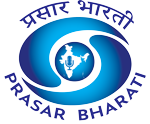India has implemented a new set of Labour Codes aimed at strengthening protections and improving welfare for workers across sectors.
The Centre announced on Friday that the four Labour Codes—the Code on Wages (2019), Industrial Relations Code (2020), Code on Social Security (2020), and Occupational Safety, Health and Working Conditions (OSHWC) Code (2020)—will replace 29 existing central labour laws to streamline and modernise labour regulation.
A key focus of the reforms is increasing women’s participation in the workforce by creating safer, more inclusive, and flexible workplaces. The Codes expand provisions on maternity benefits, workplace safety, gender equality, and women’s representation in decision-making bodies, providing a comprehensive push toward greater gender equity in employment.
Under the Industrial Relations Code, women must be proportionately represented in Grievance Redressal Committees, ensuring their voices are included in resolving workplace disputes, harassment complaints, and safety issues. The balanced representation allows women to raise concerns confidently and promotes fairer outcomes.
The Code on Social Security guarantees women who have worked at least 80 days in the 12 months preceding childbirth up to 26 weeks of paid maternity leave, including eight weeks before delivery. Women who legally adopt children under three months, or commissioning mothers using surrogacy, are entitled to 12 weeks of maternity leave from the date of adoption or handover. Employers may also permit women to work from home after maternity leave, wherever feasible, based on mutual agreement.
Certification for maternity-related conditions—including pregnancy, delivery, miscarriage, medical termination, tubectomy, or illness arising from these events—can now be issued by registered medical practitioners, Accredited Social Health Activists (ASHAs), qualified auxiliary nurses, or midwives, simplifying the process compared with previous rules. If employers do not provide free pre- or post-natal care, women are entitled to a medical bonus of ₹3,500.
Returning mothers receive two daily nursing breaks until their child reaches 15 months. Establishments with 50 or more employees must provide a crèche facility, either separate or common, within prescribed distances, allowing women up to four visits per day, including during rest intervals, to balance childcare and work responsibilities.
The Labour Codes also expand employment opportunities for women, allowing work across all establishments, including night shifts before 6 a.m. and after 7 p.m., with adequate safety measures, facilities, and transport. This provision is intended to boost female workforce participation, even in sectors previously considered hazardous or restricted.
The Code on Wages prohibits gender discrimination in recruitment, pay, and employment conditions, ensuring equal pay for equal work. Central and State Advisory Boards must include at least one-third women members to advise on minimum wages, employment opportunities, and women’s participation across establishments, reinforcing their role in labour policy-making.
The reforms collectively provide a comprehensive framework for women’s empowerment at work, combining equality, safety, flexibility, and childcare support. By guaranteeing equal treatment, maternity benefits, non-discrimination, and representation, the Codes aim to strengthen women’s economic participation and foster a secure, enabling environment for them to contribute fully to India’s workforce.










